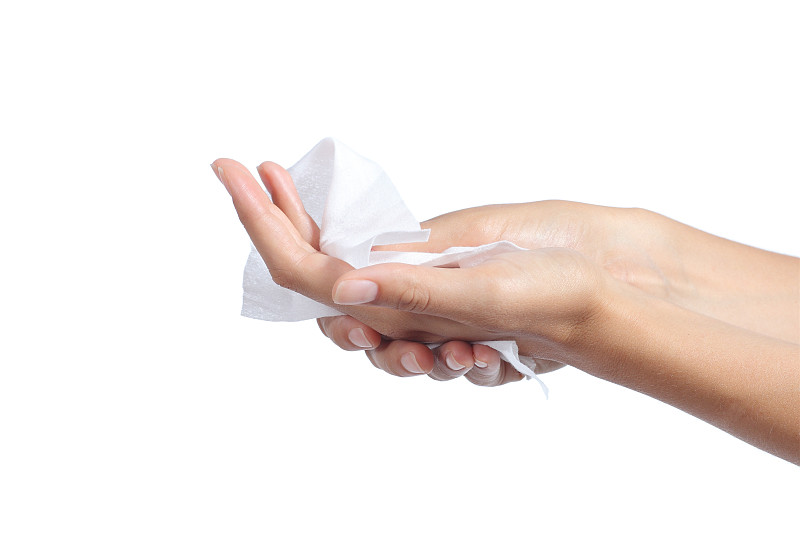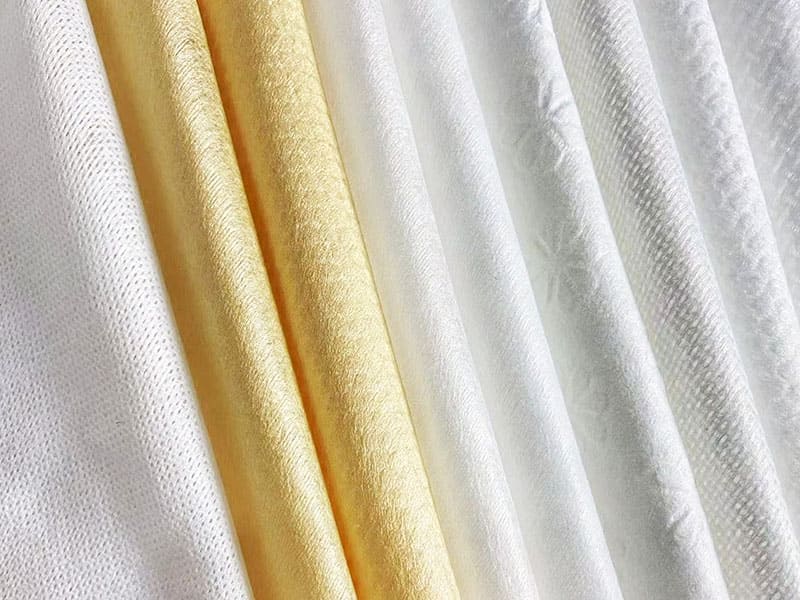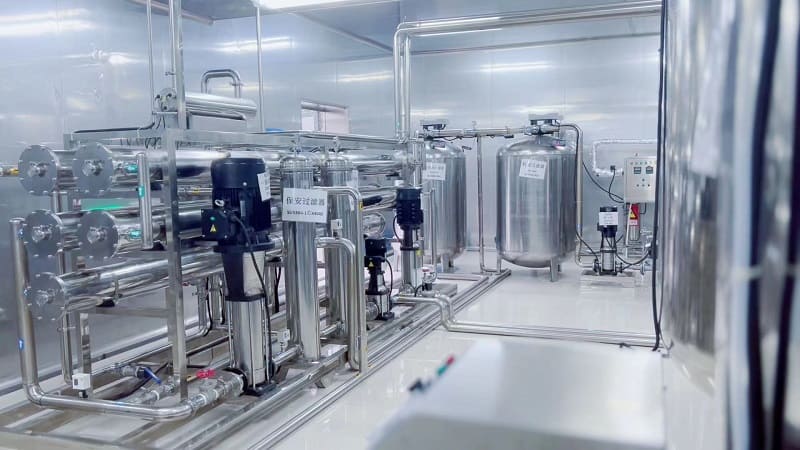Clean and fresh in a single swipe - Wet wipes, the ultimate hygiene guide!
Wet wipes are a versatile and convenient product that has become a household and business staple. These pre-moistened, disposable towelettes are made of soft, nonwoven material that is gentle on the skin and can be used for a wide range of purposes. From personal hygiene to cleaning and disinfecting surfaces, wet wipes have endless applications in daily life.
Whether it's wiping away makeup or refreshing after a workout, wet wipes are perfect for quick cleanups on-the-go. They are also commonly used in industries such as baby care, personal care, pet care, household cleaning, industry cleaing and hospitality to maintain high standards of hygiene and sanitation.
With their convenience and versatility, wet wipes have earned their place as an essential item in many people's lives. From small travel-sized packs to larger canisters and tubs for home use, wet wipes are available in different sizes and types to meet different needs. So why not make wet wipes a part of your daily routine and enjoy their benefits for yourself?

Some factors you should consider if you are planning to create a wet wipes brand
Spunlace Nonwoven
When developing a wet wipes brand, choosing the right nonwoven fabric is essential. Spunlace nonwoven fabric is a popular choice due to its softness, strength, and absorbency. It is gentle on the skin, strong enough to withstand repeated wiping, and highly absorbent, making it an effective choice for wet wipes. It is also biodegradable and eco-friendly, which is increasingly important to environmentally conscious consumers. When selecting a nonwoven fabric, consider not only its softness, strength, and absorbency, but also its safety and environmental impact. Using high-quality spunlace nonwoven fabric can help create effective, safe, and eco-friendly wet wipes that meet the needs of your target audience. Ultimately, the right nonwoven fabric can make all the difference in creating a successful wet wipes brand.
| PARAMETERS | OUR SUGGESTION |
|---|---|
| Fiber | Polyester/Viscose/Bamboo Custom blend 20%-100% Viscose |
| Grammage | 30-100gsm |
| Pattern | Mesh,plain,embossed,big dot, little dot |


Only the best for your skin – purified water in every wipe
When producing wet wipes, QIMEI use purified water to ensure the wipes are free from impurities that may cause skin irritation or other issues. Purified water is water that has undergone a filtration process to remove impurities such as chemicals, minerals, and microorganisms.
Using purified water is important for maintaining the quality and safety of the wet wipes, as tap water may contain chemicals or minerals that can affect the wipes' effectiveness or cause skin irritation. Additionally, using purified water helps to extend the shelf life of the wipes by reducing the risk of bacterial growth or contamination.
At QIMEI, we use EDI ultrapure water system to make sure the puriest water for every piece of wipe.
The Formulation
As a wet wipes manufacturer, Qimei has the ability to develop customized formulations for clients according to their specific needs and requirements. We understand that different clients may have unique preferences or requirements for their wet wipes, which is why we offer the flexibility to create formulations tailored to their needs.
Our team of experienced professionals has the expertise to develop effective and safe formulations that meet or exceed industry standards. We carefully select high-quality ingredients and conduct rigorous testing to ensure that our formulations are safe, effective, and meet our clients' expectations.
In addition to creating custom formulations for our clients, we also offer the option to manufacture wet wipes using our clients' own formulations. This allows businesses to maintain control over their product's formulation and ensure that it meets their specific needs and preferences.



Wet Wipes Packing Material
At Qimei, we understand that the packaging of wet wipes is just as important as the quality of the wipes themselves. That's why we offer a range of packaging materials that are designed to keep wet wipes fresh and protected.
Our packaging materials are made from safe, durable, and eco-friendly materials, and are available in a variety of sizes and styles to meet the unique needs of our clients. We offer different types of packaging materials to choose from, including:
-
Resealable flow packs: Flow packs are the most popular choice for wet wipes, closure with sticker / plastic cover (Lid/cap), as they allow for easy access and help to keep the wipes fresh and moist. We offer different sizes and shapes of resealable flow packs to meet different needs.
-
Canisters: Canisters are another popular packaging option, as they provide a convenient and hygienic way to store and dispense wet wipes. Our canisters are made from high-quality materials that are resistant to moisture and other environmental factors.
- Box: Box packing provides a more substantial and stable container for the wipes, making it ideal for use in homes, offices, or other settings where multiple wipes may be needed. The box can also be easily refilled, reducing waste and providing a cost-effective solution.
- Bucket packing: is a larger format that can hold more wipes, making it suitable for high-traffic areas or situations where frequent cleaning is required. The bucket's airtight seal helps keep the wipes moist and prevents contamination, making it an ideal option for industrial or commercial use
-
Sachets: For on-the-go use, sachets are a convenient option that can easily fit in a purse or pocket. Our sachets are made from lightweight materials that are easy to open and dispose of.
All of our packaging materials are customizable to meet the specific needs of our clients, including branding,laminated packing film, labeling, plastic lid/cap and other customization options. We work closely with our clients to ensure that their packaging is not only functional, but also aligns with their brand and marketing goals.
Frequently Asked Question - Wet Wipes Raw Material
Which type of spunlace nonwoven is best for wet wipes?
What is flushable wipes made of?
How long do wipes take to decompose?
What is the main ingredient in wet wipes?
What preservative is in wet wipes?
What is biodegradable wipes made of?
Which type of spunlace nonwoven is best for wet wipes?
When it comes to choosing the best spunlace nonwoven fabric for wet wipes, there are several options available, each with unique qualities. The type of spunlace nonwoven you choose will depend on the specific needs of your product and its intended use.
For example, if you're creating a baby wipe, a cotton-based spunlace nonwoven fabric would be an excellent choice. This type of fabric is super soft, highly absorbent, and gentle on delicate skin.
On the other hand, if you're creating a cleaning wipe, you might opt for a spunlace nonwoven made from a blend of polyester and wood pulp. This type of fabric is strong, durable, and perfect for tackling tough messes.
If you're making a facial wipe or beauty product, a viscose and polyester blend would be an excellent choice. This type of fabric has a luxurious, silky feel that is gentle on the skin.
And if you're looking to create an eco-friendly wet wipe, a spunlace nonwoven made from bamboo fibers would be a great choice. Not only is it biodegradable, but it's also soft, strong, and absorbent.
Ultimately, the key to choosing the best spunlace nonwoven for your wet wipes is to consider the specific needs of your product and select a fabric that will deliver the desired results.
What is flushable wipes made of?
Flushable wipes are made of a combination of materials, which typically include a blend of cellulose fibers, synthetic fibers, and binding agents. The exact composition can vary depending on the manufacturer and the intended use of the wipes.
The outer layer of flushable wipes is typically made from a spunlace nonwoven fabric, which is a strong and durable material that can withstand exposure to water without breaking down.
The inner layer of flushable wipes contains the cleaning solution, which is typically a combination of water, detergents, preservatives, and other ingredients that are formulated to be gentle on the skin.
In addition, many flushable wipes are treated with special additives that help to break down the wipes when they are flushed, making them more environmentally friendly.
It's important to note that not all wipes marketed as "flushable" are actually safe to flush. In some cases, these wipes can cause blockages in plumbing systems and contribute to environmental pollution. As such, it's important to follow the manufacturer's instructions carefully and only flush wipes that are specifically labeled as safe to flush.
How long do wipes take to decompose?
The time it takes for wipes to decompose can vary depending on a number of factors, including the type of wipe, the materials it's made from, and the conditions in which it's disposed of.
In general, most traditional wipes, including those made from plastic fibers or cotton, can take several years or even decades to decompose in a landfill. This is because they are not biodegradable and do not easily break down in the presence of oxygen, sunlight, or other natural elements.
Flushable wipes, on the other hand, are designed to break down more quickly and easily when disposed of in water. However, even flushable wipes can take some time to fully decompose and can contribute to blockages in sewer systems and water treatment plants.
To minimize the environmental impact of wipes, it's important to dispose of them properly, following the instructions on the packaging. In general, it's best to avoid flushing any type of wipe down the toilet and instead dispose of them in the trash.
What is the main ingredient in wet wipes?
The main ingredient in wet wipes is the wiping solution, which is typically a combination of water, cleaning agents, preservatives, and other additives. The exact composition of the wiping solution can vary depending on the intended use of the wipes.
Water is typically the primary ingredient in the wiping solution, serving as a carrier for the other ingredients and providing moisture to help clean and refresh the skin. Cleaning agents, such as detergents and surfactants, help to remove dirt, oil, and other impurities from the skin.
Preservatives, such as benzalkonium chloride or phenoxyethanol, are added to wet wipes to prevent the growth of bacteria and mold, which can cause the wipes to spoil or become contaminated over time.
Other ingredients, such as fragrances, moisturizers, and skin-conditioning agents, may also be added to wet wipes to enhance their cleaning and refreshing properties and improve the user's experience.
It's important to note that some people may be sensitive to certain ingredients in wet wipes, such as fragrances or preservatives, and may experience skin irritation or allergic reactions as a result. If you experience any adverse reactions while using wet wipes, it's best to discontinue use and consult with a healthcare provider.
What preservative is in wet wipes?
There are several different preservatives that can be used in wet wipes to prevent the growth of bacteria, fungi, and other microorganisms that can cause spoilage or contamination over time. Some common preservatives found in wet wipes include:
-
Benzalkonium chloride: This is a quaternary ammonium compound that is effective against a wide range of microorganisms. It is commonly used in disinfectant wipes and other cleaning products.
-
Phenoxyethanol: This is a glycol ether that is effective against both bacteria and fungi. It is commonly used in personal care products such as wet wipes, shampoos, and lotions.
-
Methylisothiazolinone (MIT): This is a synthetic compound that is effective against bacteria and fungi. It is commonly used in personal care products and household cleaning products.
-
Chlorhexidine: This is a disinfectant and antiseptic agent that is effective against a wide range of microorganisms. It is commonly used in healthcare settings and in personal care products such as wet wipes.
The choice of preservative used in wet wipes can depend on a variety of factors, including the intended use of the wipes, the pH of the wiping solution, and the desired shelf life of the product. It's important to note that some people may be sensitive to certain preservatives, and may experience skin irritation or allergic reactions as a result.
What is biodegradable wipes made of?
Biodegradable wipes are made of materials that are capable of breaking down naturally in the environment, typically through microbial or enzymatic action. The specific materials used in biodegradable wipes can vary depending on the brand and the intended use of the wipes, but some common materials include:
-
Cellulose: This is a natural polymer that is derived from plants, and is commonly used in biodegradable wipes as a sustainable alternative to synthetic materials.
-
Bamboo: This is another natural material that is commonly used in biodegradable wipes due to its sustainability and biodegradability.
-
Cotton: This is a natural fiber that is often used in biodegradable wipes due to its softness and absorbency.
-
Rayon: This is a synthetic fiber that is derived from plant materials, and is sometimes used in biodegradable wipes as a more eco-friendly alternative to other synthetic materials.
In addition to the materials used in the wipes themselves, biodegradable wipes may also use environmentally friendly ingredients in their cleaning solutions, such as plant-based surfactants and natural fragrances. The goal of biodegradable wipes is to provide a more sustainable and eco-friendly alternative to traditional wipes, while still providing effective cleaning and refreshing properties.
